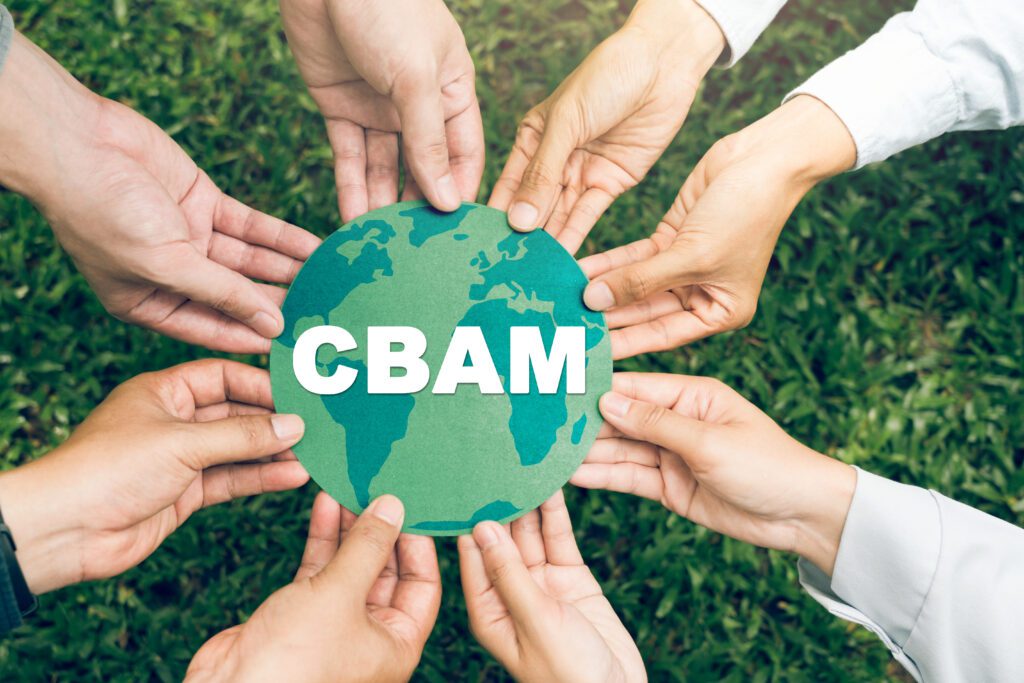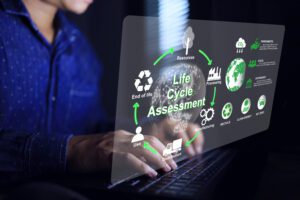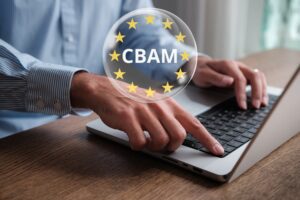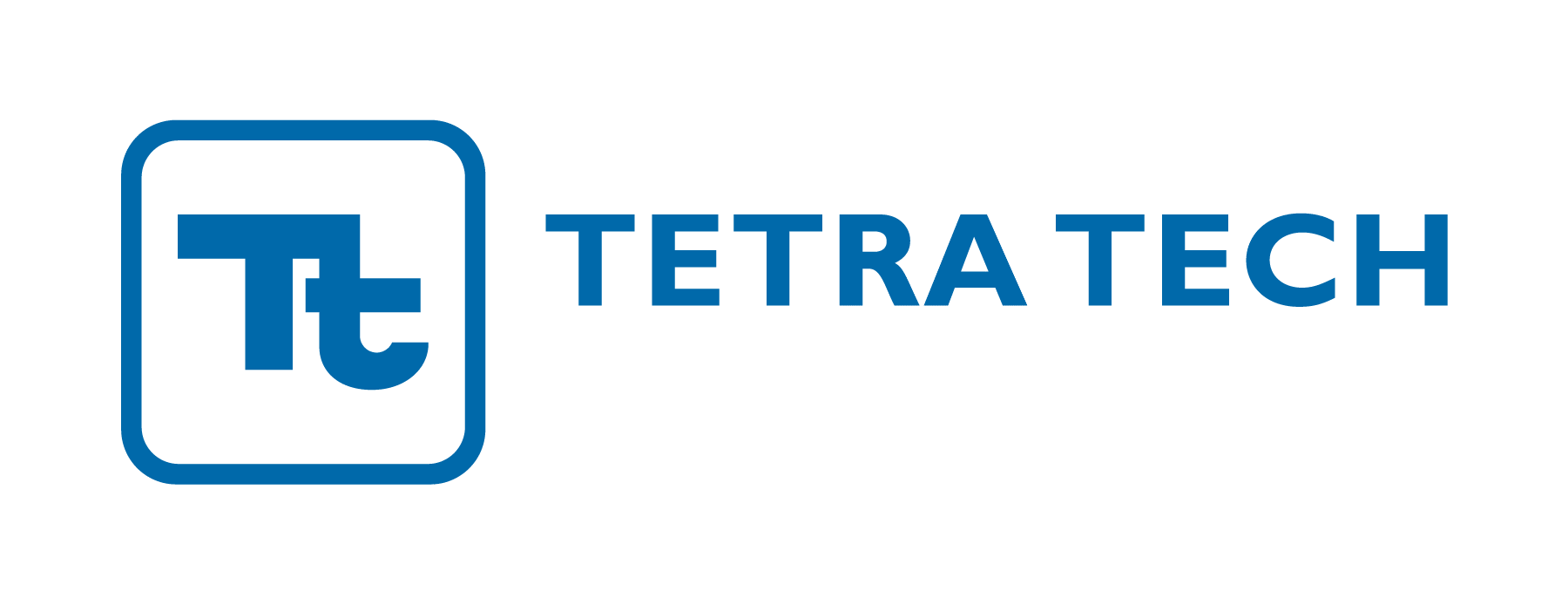Editor’s note (October 2025): This article has been updated to reflect the adoption of the EU’s Omnibus I Regulation, which introduces a 50-tonne annual de minimis threshold and new CBAM reporting deadlines beginning in 2027.
As CBAM reporting progresses, U.S. exporters are facing rising expectations from their EU customers. While the heaviest obligations under the EU’s Carbon Border Adjustment Mechanism (CBAM) will not begin until 2026, emissions reporting is already active, and importers are increasingly requesting data from their supply chains. (Definitive CBAM applies to imports from 1 January 2026, but the first annual declaration and certificate purchases occur in 2027 for 2026 imports.)
One area drawing fresh attention is the CBAM de minimis threshold, a limited exemption that shields low-volume imports from CBAM obligations. Under the Omnibus I Regulation, this buffer has been recast as a mass-based threshold. For U.S. companies exporting steel, aluminum, fertilizers, and other CBAM-covered goods, now is the time to understand what the exemption really means, and how to prepare for what is next.
What is the De Minimis Threshold Under CBAM?
Under the adopted Omnibus I Regulation (September 2025), EU importers are exempt from CBAM obligations when their total imports of covered CBAM goods remain below 50 tonnes per year, per importer (EORI-level). The exemption applies to iron and steel, aluminium/aluminum, cement, and fertilisers/fertilizers, and does not apply to hydrogen or electricity. It replaces the former low-value (€150 per consignment) rule used during the transitional phase.
Importantly, the exemption is determined at the EU importer level, not the exporter. A U.S. company’s shipment volume matters only in the context of how much a specific EU customer imports annually.
Why the De Minimis Exemption Matters for U.S. Exporters
Even if the de minimis threshold shields your shipment today, the landscape is shifting fast. Here is why understanding and preparing remains critical:
- You may still need to supply emissions data. Many EU importers request supplier emissions information proactively, even when they are currently under the threshold.
- It is specific to product categories. A U.S. exporter’s product may be exempt for one customer but trigger CBAM duties for another depending on that importer’s annual totals and product mix.
- The rules are now settled. The de minimis mechanics are part of the adopted Omnibus I Regulation, so importers are organizing around the 50-tonne threshold for 2026 coverage and 2027 actions.
How the Omnibus I Regulation Has Changed the De Minimis Rules
In 2025, the EU finalized CBAM simplifications under Omnibus I. Key changes now in effect include:
- A 50-tonne mass-based threshold per importer per year, replacing the low-value (€150) exemption.
- Exclusion of hydrogen and electricity from the de minimis exemption (no matter the quantity).
- Timeline adjustments: first annual CBAM declaration due 30 September 2027 for 2026 imports, CBAM certificates on sale from 1 February 2027, repurchase window until 31 October, with unused certificates cancelled 1 November.
- Verification simplification: when using default values, no accredited third-party verification is required; actual emissions still require accredited verification.
These amendments simplify compliance for genuinely small-scale importers while keeping nearly all embedded emissions covered.
Examples in Practice
Real-world examples help illustrate how these changes will impact U.S. exporters:
- Aluminum Exporter: A Minnesota-based aluminum components maker ships 48 tonnes of extruded profiles annually to a Dutch bike manufacturer. Under Omnibus I, that buyer is under the 50-tonne threshold; if imports increase, full CBAM obligations may be triggered.
- Fertilizer Exporter: A South Carolina fertilizer company exports 45 tonnes split across three EU customers. Two stay within the exemption, but one is projected to exceed 50 tonnes in total CBAM imports next year, prompting an urgent need for emissions documentation aligned with EU rules.
- Electricity Exporter: A Texas renewable energy firm sells electricity certificates to a Spanish buyer. Because electricity is excluded from the de minimis rule, CBAM obligations apply regardless of quantity.
What Should U.S. Exporters Do Now?
- Track exports by product and by customer. Monitor each EU buyer’s cumulative imports against the 50-tonne mark.
- Start gathering emissions data (cradle-to-gate) now, preferably in formats compatible with EU methods, so your customers can use it directly in CBAM submissions.
- Strengthen communication with EU buyers. Ask about their CBAM strategies, thresholds, and data needs so you can position yourself as a transparent, compliant supplier.
- Plan for the 2026/2027 cadence. 2026 imports fall under the definitive regime; declarations and certificate purchases occur in 2027. Build internal workflows (data collection, verification where needed, record-keeping) now.
Conclusion
The de minimis exemption offers short-term relief for low-volume imports, but it is narrow and importer-specific. With the Omnibus I Regulation now in force, the winners will be exporters who can supply reliable, EU-compatible emissions data and adapt quickly as their customers’ volumes grow.
For more on how CBAM is unfolding and how to navigate your compliance requirements, contact Tetra Tech’s team of compliance experts at [email protected] or visit https://www.sustainable-markets.com/cbam/.






